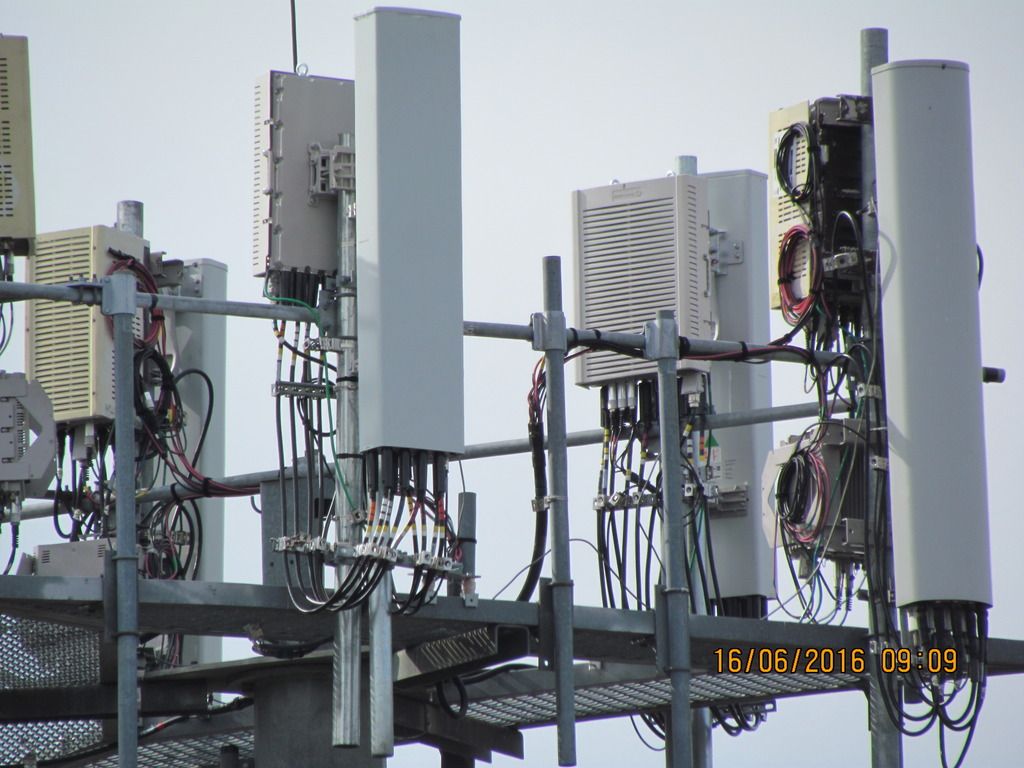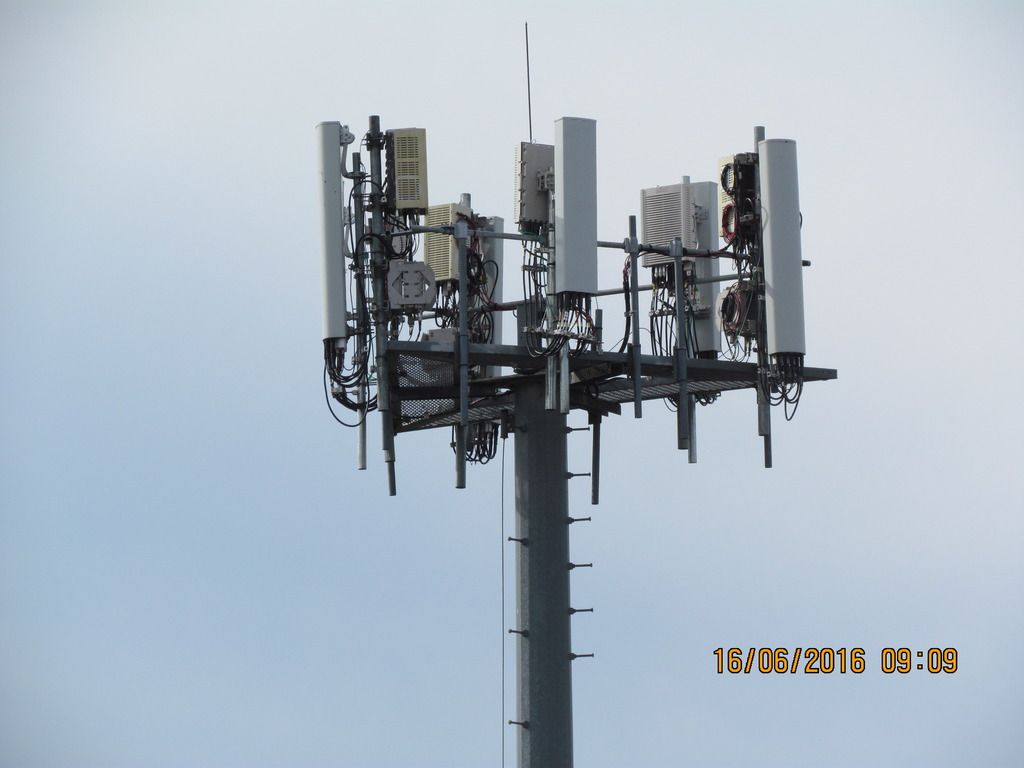
Boosted20V
-
Posts
928 -
Joined
-
Last visited
Content Type
Profiles
Blogs
Articles
Media Demo
Gallery
Downloads
Events
Forums
Posts posted by Boosted20V
-
-
Those are my thoughts exactly.
-
Think existing customers can get on this plan?
-
Here are the pictures of site --------- which is at the intersection of I83/Cameron Street right outside of downtown Harrisburg.


-
 7
7
-
-
DuBois off of I80 should get an honorable mention.
-
Finally saw a crew working on a Shentel tower right outside of downtown Harrisburg at the intersection of I83/2nd St. Appeared to be hanging 2.5 antennas. About time!
-
 2
2
-
-
No I don't think that's what implied here.
I mean up until a few months ago 3g was still being used by them.
It shows that they are not standing still. They were the first in the US with a nationwide 4g roll out. And I suspect that they want to be in the same boat the next go around.
5g technology what ever that ultimately ends up being, will help them leave land lines entirely.
Don't forget competition is a good thing.
Sent from my SAMSUNG-SM-G890A using Tapatalk
Sprint was first to 4G with WiMAX.
-
 3
3
-
-
That is correct. Per network.sprint.com it has 2 data speed upgrades. The next time I get a chance, I'll pass by to verify.
-
 1
1
-
-
Looks like the site across the street from the LV Mall has finally gone live with LTE.
-
Johnner, your phones are unlocked and you're still pissing and moaning. Shouldn't you be on ATT by now? I'm sure you develop enterprise level software for a living and therefore understand the complexity involved, correct?
-
 6
6
-
-
Some rabid followers of T-Mobile in that comment string.
-
Shentel has refarmed PCS to have 2 5x5 carriers so it shouldn't be an issue. I'm not sure what markets Sprint has contiguous PCS, though, for a true 10x10 carrier.
-
Shentel has hinted time and again at wanting to invest and expand in wireless "in their backyard" and keep it to rural areas. In my mind, that can only mean nTelos. I still wonder why it has taken so long. On the conference call yesterday Shentel noted how good of a position they're in regarding debt and how they would like to invest.
-
 1
1
-
-
If there are hills or mountains as an obstruction, it doesn't matter what frequency is being broadcast. It will be blocked. I've seen your posts time and again and I have to ask, why are you a Sprint subscriber? You have nothing positive to add.
-
 3
3
-
-
I was just thinking this. Recently purchased an iPhone6 on ebay for one of the other lines on my account and the Sprint variants are definitely less costly. Should be quite sought after now.
-
A little over 500.
-
There was an investors conference SHEN participated in earlier this year where they discussed B41. I want to say they have ~150 sites they plan to deploy it on and will begin ~May of this year. They stated all sites which were getting the upgrades would have new backhaul provisioned by the end of January, so that should all be in place by now.
-
 1
1
-
-
Seems a fair assessment from my perspective. I travel enough with my Sprint phone and VZ hotspot to compare the two. I have friends with T-Mobile but in my area they are still by far the weakest. A few co-workers have them and have nothing but bad things to say. Friends from farther east in PA (Philly/Lehigh Valley) have generally positive comments but still get Edge way too often (or 911 only inside buildings). The way I see it, for most of the population 6-10 mbps is still sufficient on a mobile connection and given the now widespread 800mhz in my area Sprint is very similar to the big 2 in coverage.
-
Was back in the LV this past weekend. B41 is available throughout Quakertown, Coopersburg, Hellertown, and most of Southern Bethlehem. 800mhz is also widespread in all of these areas. The only sore spots I see remaining are the LVH and LV Mall, two locations with LARGE amounts of people in them.
-
Working for me.
-
I'm shocked T-Mobile is giving max speed at 8mbps. Why not let them have full speed until they hit their cap? T-Mobile is the data strong network and has the more bandwidth per customer so it should be able to handle it until their cap is hit. They already do it with the regular plans. Maybe the network is starting to slow.
Sent from my iPhone using Tapatalk
I think it's simply to incentivize using a postpaid plan.
-
 2
2
-
-
Here you go:
"The Cellular Service dates back to 1981 when the FCC set aside 40 MHz of spectrum for cellular licensing. To issue cellular licenses, the FCC divided the U.S. into 734 geographic markets called Cellular Market Areas (CMAs) and divided the 40 MHz of spectrum into two, 20 MHz amounts referred to as channel blocks; channel block A and channel block B. A single license for the A block and the B block were made available in each market. The B block of spectrum was awarded to a local wireline carrier that provided landline telephone service in the CMA. The A block was awarded to non-wireline carriers. The wireline/non-wireline distinction for cellular licenses no longer exists."
-
 1
1
-
-
Because they bought a bunch of low band 3G spectrum and were able to affordably buildout everywhere.
Then they bought all useful lte lowband spectrum which they … see the pattern?
They were given the Cellular licenses free of charge if I'm not mistaken.
-
I've gotten B41 as well throughout Quakertown. Sprint's network there is strong.
-
Why do you think it may not be possible? Are you referring to Sprint going bankrupt or something else?
Not much FCF available for anyone but T and VZ.


Network Vision/LTE - Shentel Market (Shenandoah Valley/Hagerstown/Harrisburg)
in Markets
Posted
Quite a few sites in the more suburban Harrisburg area are getting B41 upgrades. Saw them being added to a site on Linglestown Rd as well as a few on the west shore.